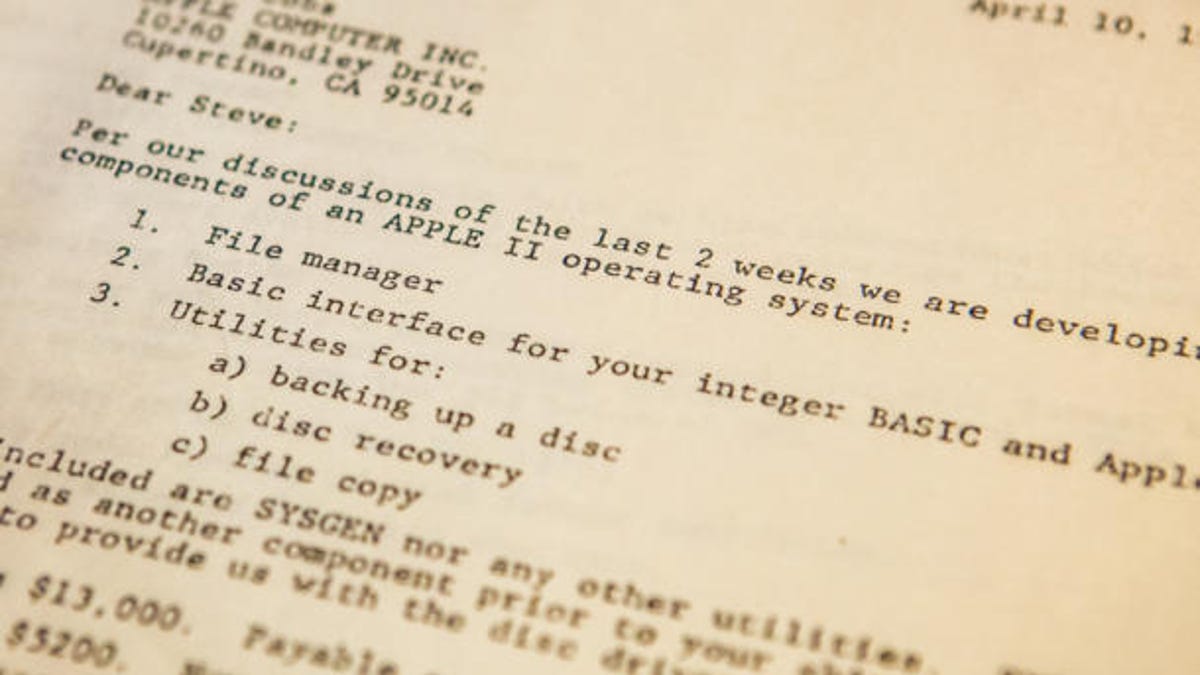Public at last: Apple II DOS code that launched an empire
The Computer History Museum has published the source code for the Apple II DOS. Last spring, CNET was first to report the existence of documents that led to the creation of the code.

If ever source code can be said to have helped launch an empire, the code behind the Apple II DOS would qualify. And now it's available to everyone.
Last spring, CNET was first to report on the surfacing of documents that led to Apple's commissioning the creation of a disk operating system (DOS) for the young company's new computer, the Apple II.
Without that DOS, the computer would probably never have made a mark, since the only storage option otherwise available was a tape drive. Over the Christmas holidays of 1977, Apple co-founder Steve Wozniak designed a disk controller, but he needed a DOS.
In early 1978, Apple signed a $13,000 contract with Shepardson Microsystems to create the DOS. The contract was addressed to Steve Jobs. Once it was written, programs like VisiCalc, which led to the Apple II's tremendous success, were possible.
Now, thanks to the help of the DigiBarn, a vintage computer museum in Santa Cruz County, Calif., the Computer History Museum in Mountain View, Calif., has officially published the DOS source code for all to see.
According to Bruce Damer, the founder and curator of the DigiBarn, Apple, which still owns the code, gave its blessing for the documents to be made public. What anyone will do with them is unclear, but this is one of Silicon Valley's most important treasures -- a disk operating system that helped a young company become a behemoth. Without it, we might never have seen Apple become the company it is today.

